See inside a secret Navy museum on an active base where visitors require an official escort at all times

The National Museum of the US Navy is located in the Washington Navy Yard, an active military base.
Access is limited and security measures are tight, but it contains fascinating artifacts.
Exhibits include the USS Constitution mast and part of the submersible that found the Titanic.
Before I could join a dozen others for a tour of the Washington Navy Yard in Washington, DC, I first had to pass through its heavily guarded gate.
Established in 1799, the Washington Navy Yard serves as the Navy's ceremonial and administrative center. It also houses the National Museum of the United States Navy, which opened to the public in 1963 and is the only naval museum to chronicle the Navy's history with artifacts dating from its founding to the present day.
Before we proceeded further, our guide, education specialist Mike Galloway, informed us that we were not allowed to photograph any entrances, service members, or security measures like cameras or police cars. He also emphasized that visitors could not wander around the base unattended and needed to be escorted by a guide at all times.
"I'm responsible for you at this point, and I don't want to tackle anyone today," he said, apparently joking.
The museum is in the early stages of building a more accessible space outside its tightly controlled gates. For now, it remains something of a "secret" destination.
Take a look inside the Washington Navy Yard and its museum's incredible collection of naval history.
Because the National Museum of the United States Navy is housed on an active base, access is limited.

The museum offers free tours on the second and fourth Saturday of every month, but you can't just show up. Tours need to be booked through Eventbrite or by emailing the museum at NHHC_NMUSNNavyMuseum@us.navy.mil.
The base itself felt reminiscent of a college campus with brick buildings, manicured lawns, and signs advertising events.
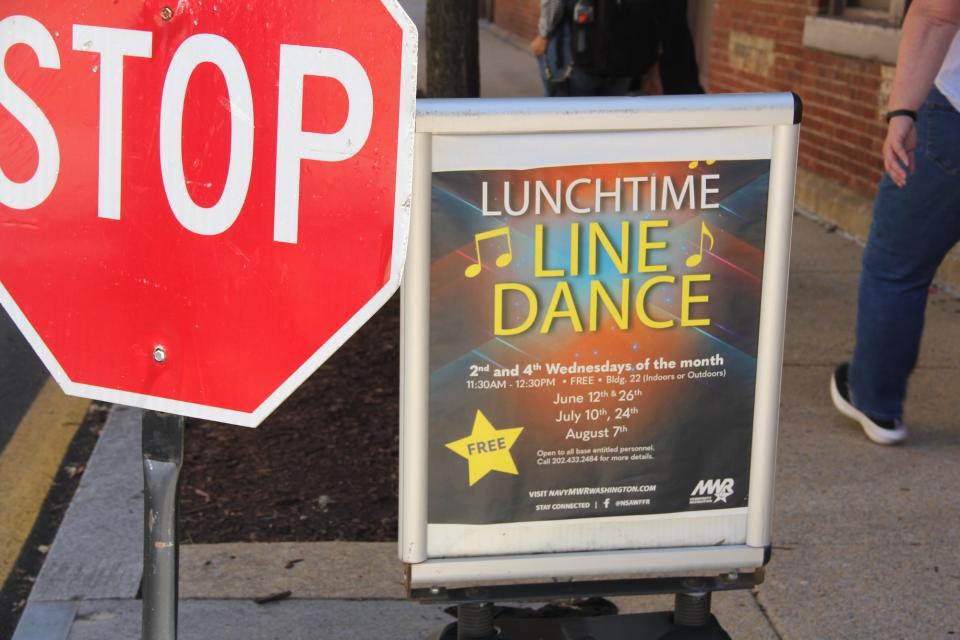
This was my first visit to a military base, so I wasn't entirely sure what to expect. I figured I'd see service members in uniform, but I hadn't anticipated a picnic with a petting zoo for military families or signs advertising karaoke and line dancing.
The National Museum of the United States Military is housed in Building 76, a former naval gun factory.
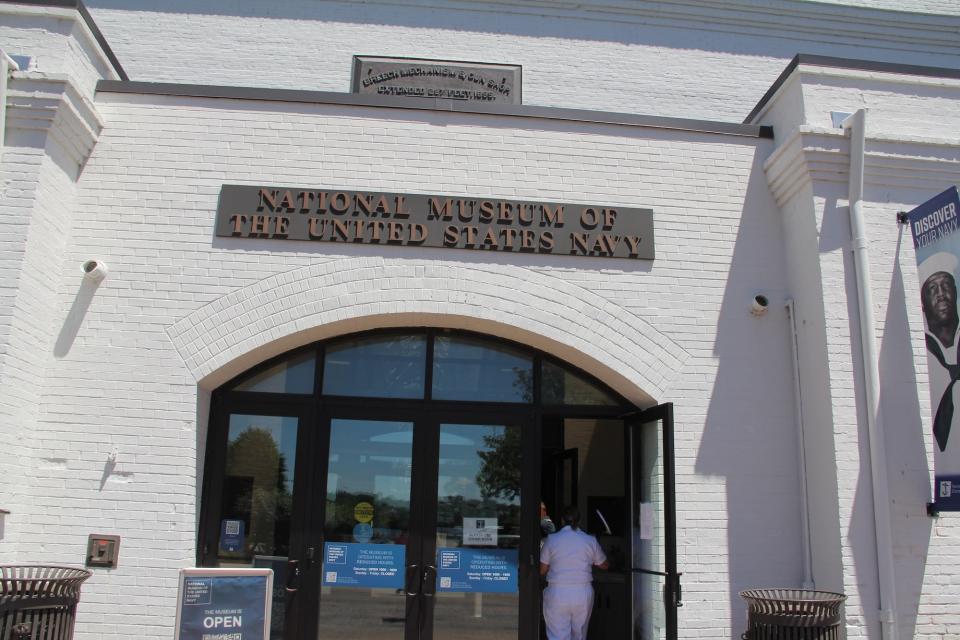
The National Museum of the United States Navy opened to the public in 1963, but the Washington Navy Yard has had a museum on its campus since 1865.
The museum paid tribute to its past with signage detailing the history of Building 76.
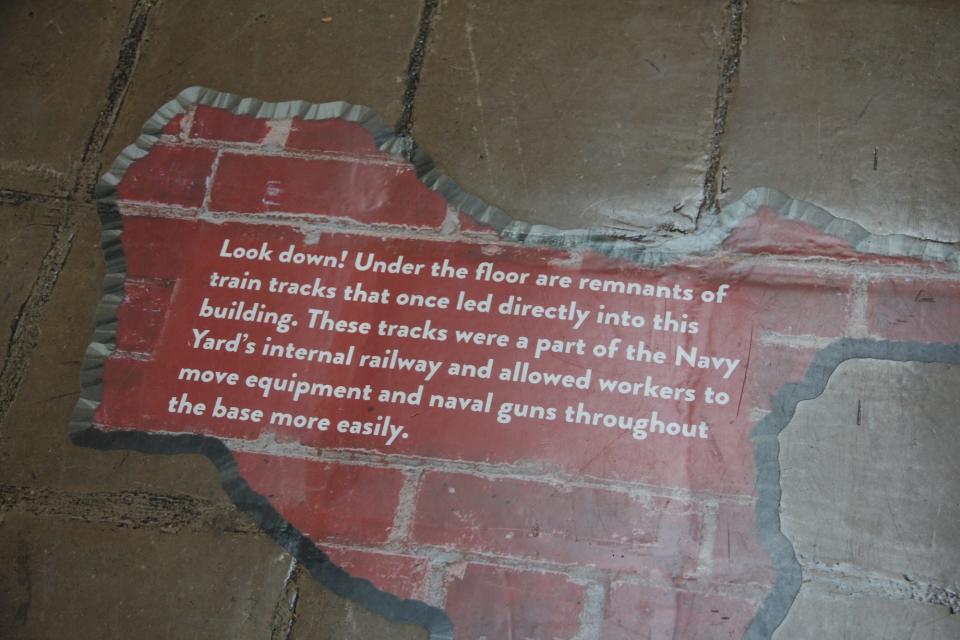
A sign on the museum floor explained the train tracks that once led into the building were used to move manufacturing equipment and guns around the base.
The museum's centerpiece was a fighting top from the mast of the USS Constitution, the world's oldest commissioned warship that's still afloat.
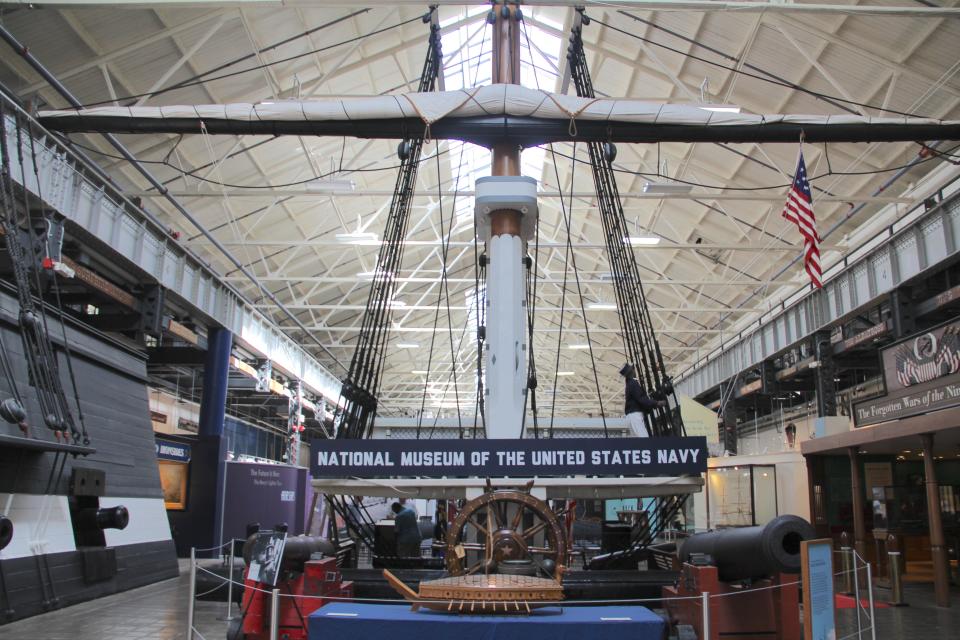
The USS Constitution is docked at the Charlestown Navy Yard in Boston and is open to the public. Completed in 1797, the ship got the nickname "Old Ironsides" for its use during the War of 1812.
Fighting tops were platforms used by Marine sharpshooters to fire at enemy ships during battle, our tour guide said.
The museum featured artifacts dating back to the establishment of the US Navy.
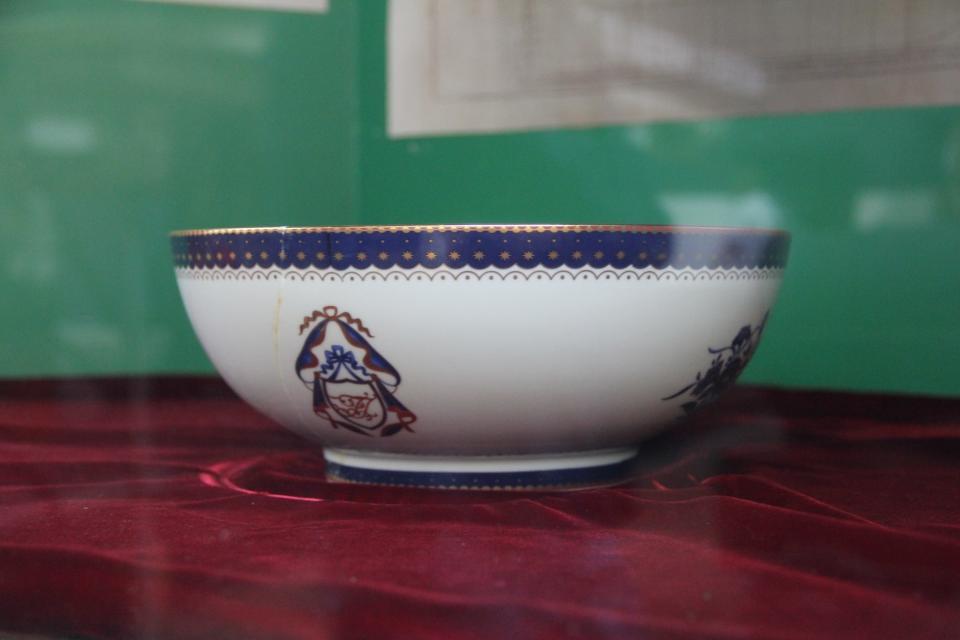
This Chinese porcelain punch bowl was made for Commodore Thomas Truxtun, who gifted a nearly identical one to his friend George Washington.
Truxtun served as the first captain of the Constellation, one of the six warships authorized by Congress as part of the Naval Act of 1794 establishing a national Navy.
Washington's bowl is on display at his historic Mount Vernon home.
A wooden figurehead from the early 19th century was believed to be modeled after King George IV.
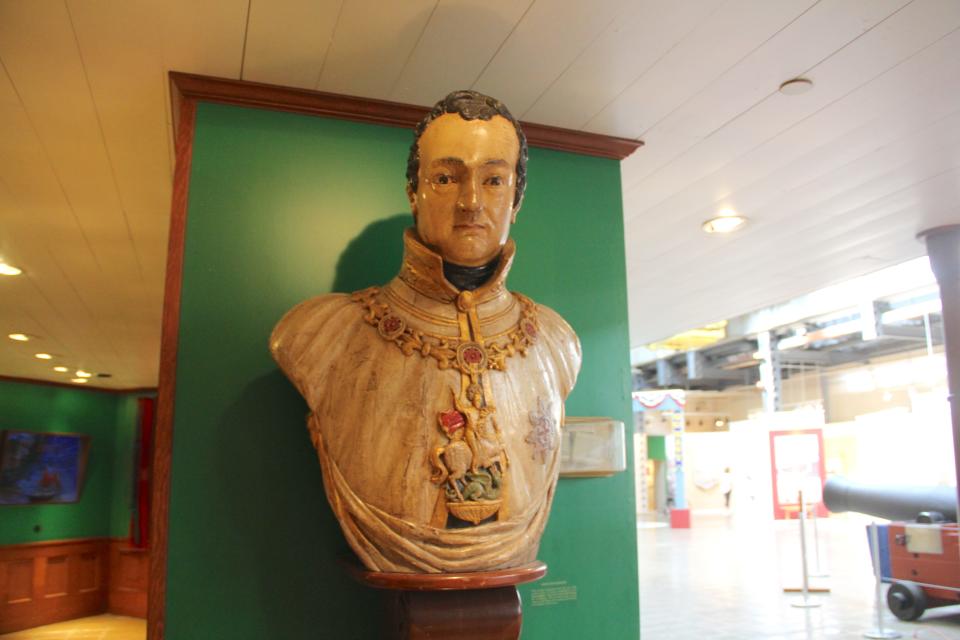
The figurehead, which would have decorated the bow of a ship, is depicted wearing the Order of St. George and the Star of the Order of the Garter, royal traditions that are still observed today.
Modern weaponry on display included items like an atomic bomb casing similar to the one used on Nagasaki in 1945.
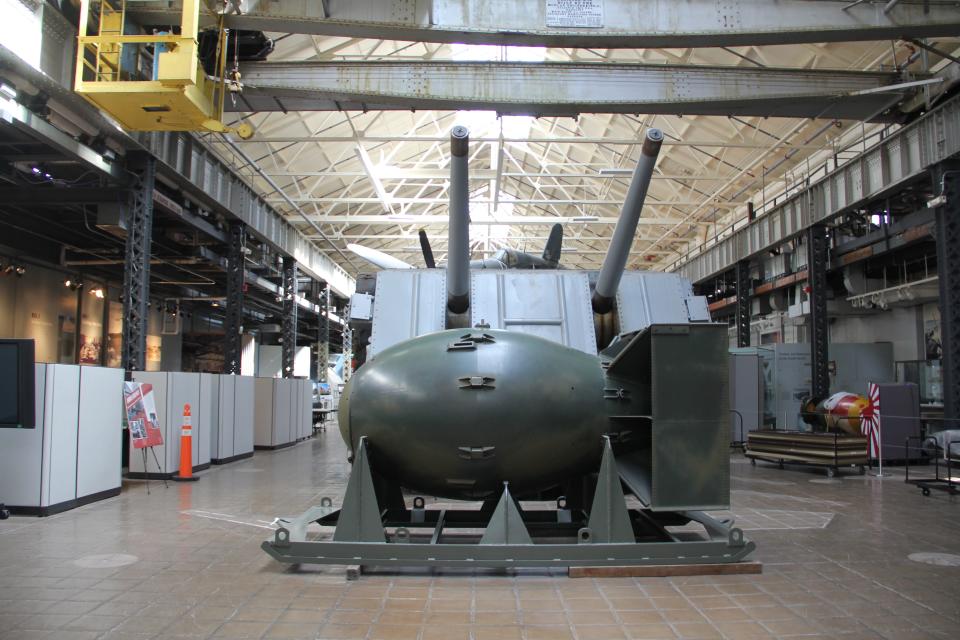
The atomic bomb, known as "Fat Man," featured a plutonium core. The casing weighs 10,265 pounds, according to the National Museum of Pacific War.
A Japanese Yokosuka MXY7-K1 Ohka plane used as a kamikaze suicide rocket bomb during World War II was suspended from the ceiling.
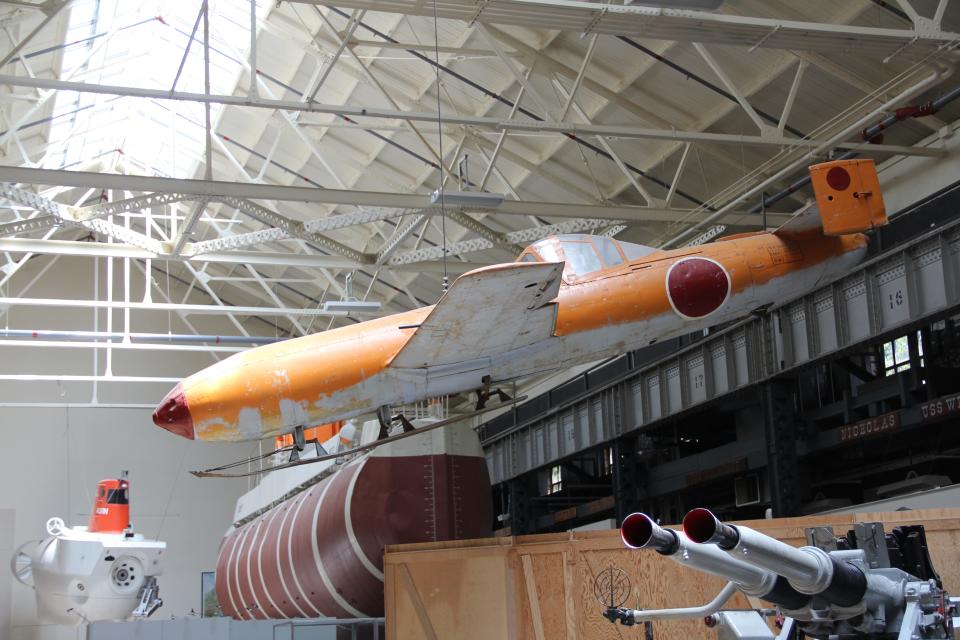
The Ohka planes were used by Japan to bomb US Navy warships, damaging the vessels and occasionally sinking them entirely, Galloway said.
The museum also displayed a Corsair fighter plane from World War II.
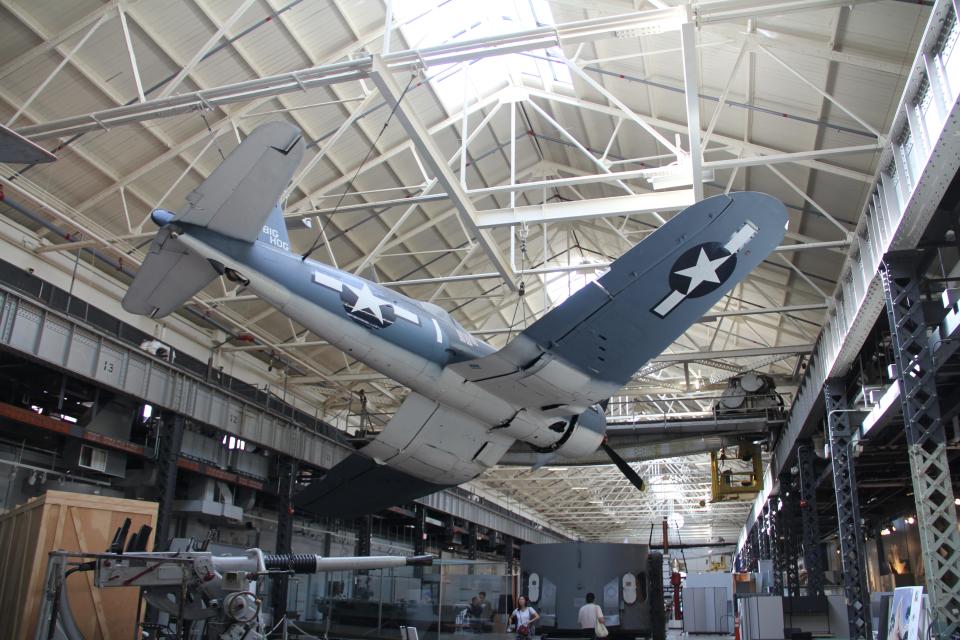
Armed with bombs and rockets, Corsair fighter planes targeted enemy aircraft during World War II.
The Mark 90 nuclear depth charge, developed by the Navy during the Cold War, was designed to destroy numerous Soviet submarines in one blast.
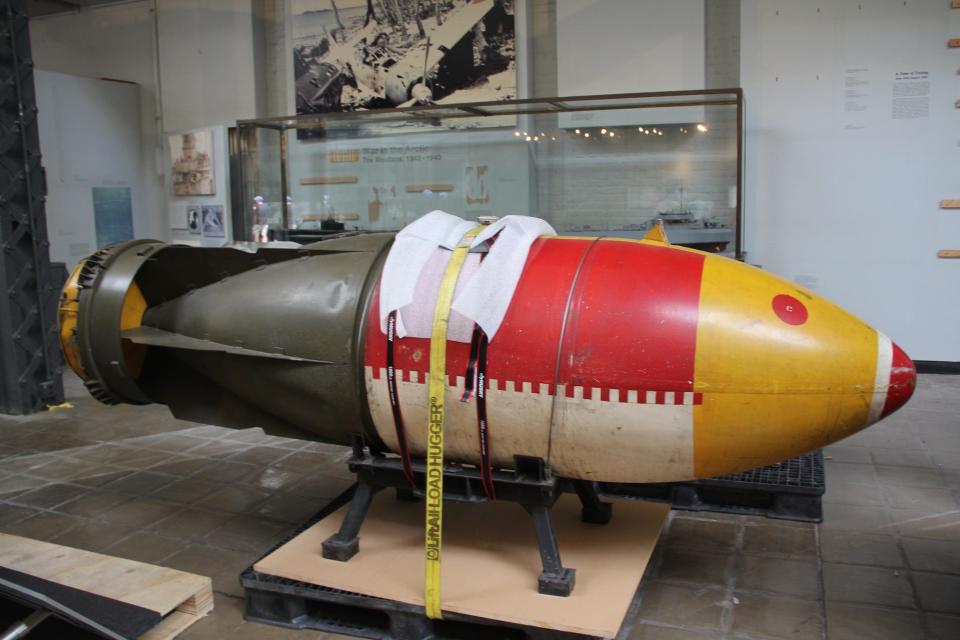
Nicknamed "Betty," the Mark 90 was part of a series of smaller nuclear weapons the US designed in the 1950s in order to dissuade the Soviet Union from attacking.
This twin-mount 38-caliber gun turret was once used to shoot down planes on the USS Reno.
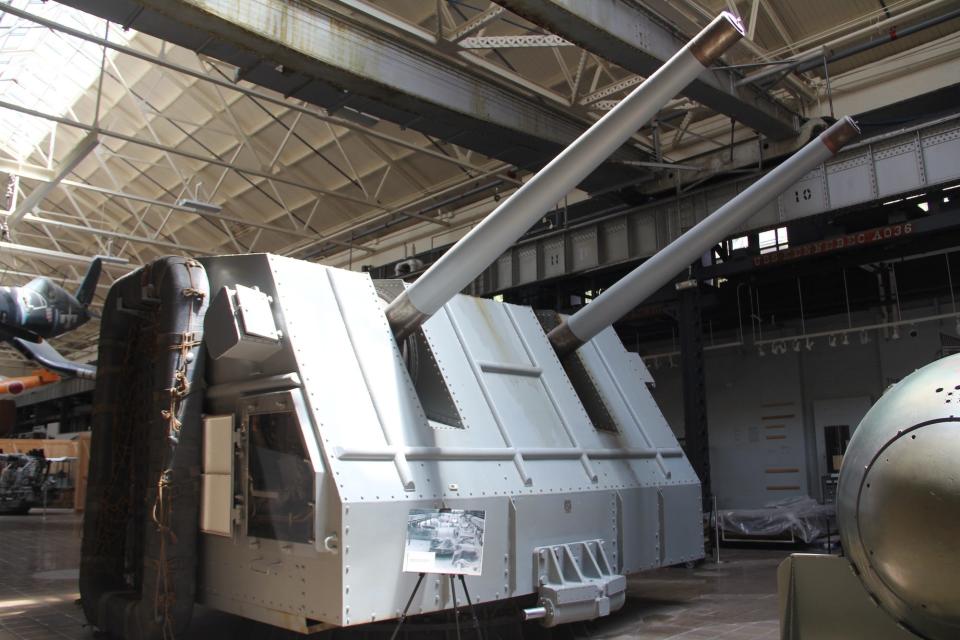
Decommissioned in 1946, the USS Reno earned three battle stars during World War II, according to the Navy.
There was plenty to see, but much of the space remains under construction until the museum's new permanent home is ready.
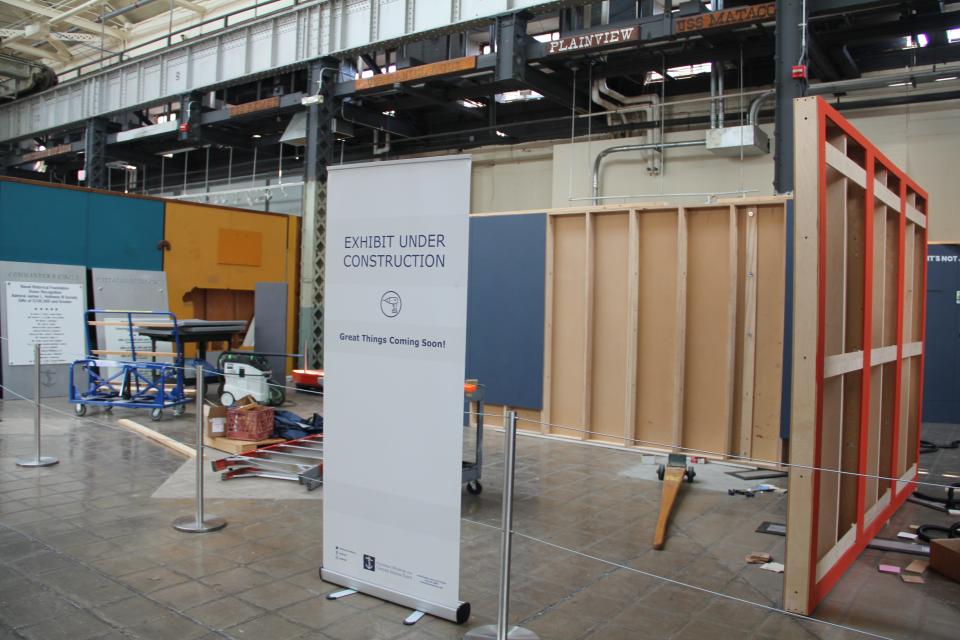
Many of the items on display didn't have accompanying plaques explaining their historical significance. During my first lap around the museum, I walked right past the nuclear-weapon exhibits without knowing what they were. I found that touring the museum with a knowledgeable guide and asking them questions was essential for getting the most out of my visit.
The museum included exhibits about other aspects of life in the Navy, such as its connection to baseball.
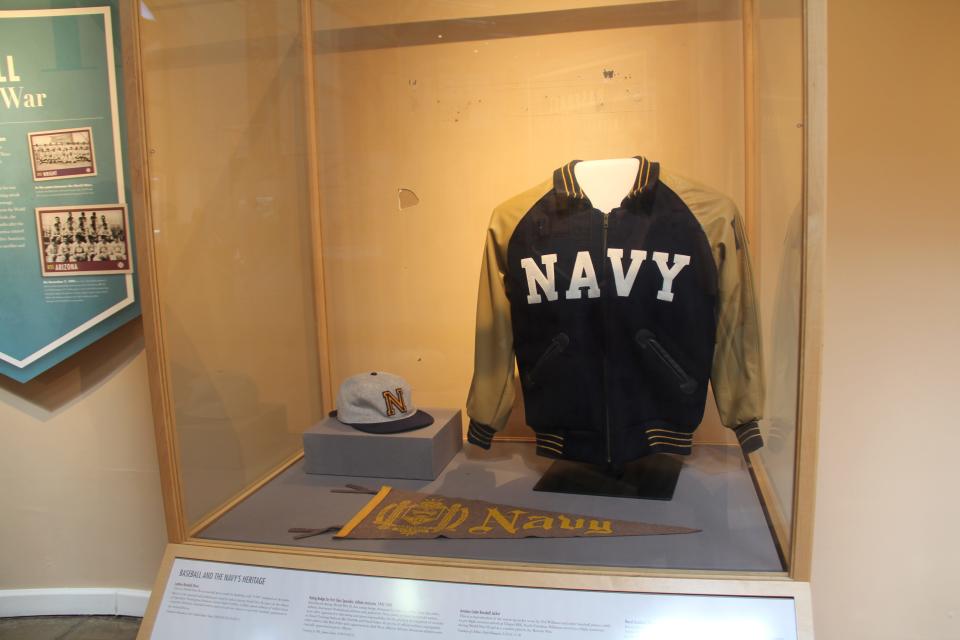
Baseball has long been beloved by service members. In the 1870s, Navy ships visiting Japanese ports would play against local teams, according to the Department of Defense.
The National Museum of the United States Navy displayed World War II-era baseball paraphernalia, such as a hat and warm-up jacket worn by service members.
The sport remains popular in the US Armed Forces. Former Major League Baseball commissioner and Air Force veteran William Eckert once said, "Wherever soldiers and veterans are, baseball will be," according to a plaque in the exhibit.
In addition to displaying historic artifacts, the National Museum of the United States Navy also functions as a ceremony space.
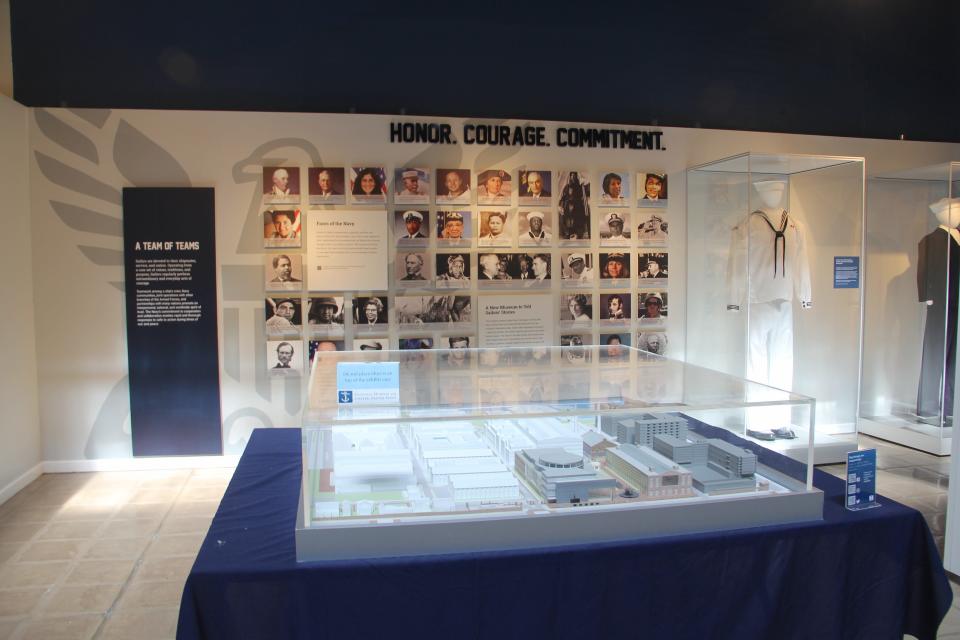
On the morning I visited, the museum was hosting a retirement ceremony for a service member. The museum also hosts promotion ceremonies.
After we had some time to look around the museum, our tour of the Washington Navy Yard began.
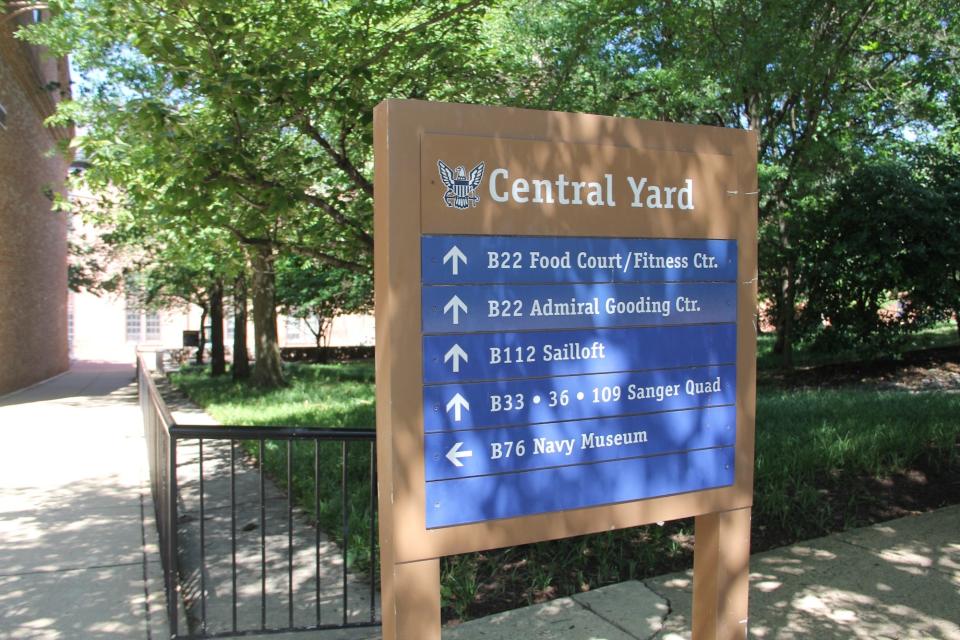
Spanning 63 acres along the Anacostia River, the Washington Navy Yard was once used for the construction of ships and artillery. The river also made it a great place to grow hemp, which was used for lines in sails and other Navy equipment, Galloway said.
Today, it's largely an administrative center.
Along the sidewalk, our guide pointed out a collection of cannons captured during historic battles.
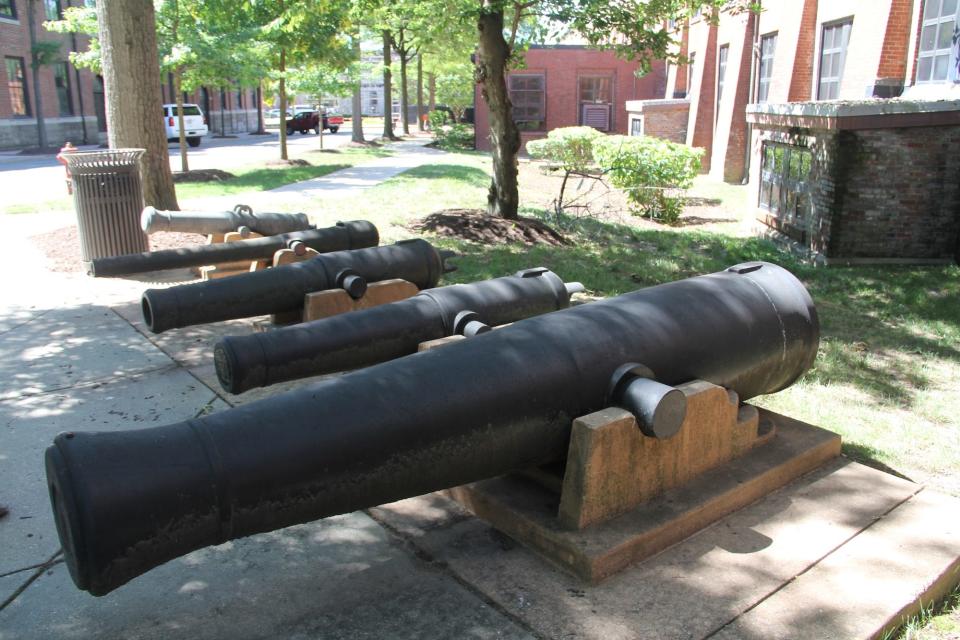
Known as "prize guns" or "trophy guns," artillery pieces captured in battle are engraved with the details of when and where they were taken.
One cannon was captured during a Civil War battle in 1861 when Confederate forces tried to shut down the riverways leading into Washington, DC, by firing cannons from bluffs outside of the capital.
"That's the great thing about guns and cannons," Galloway said. "They can actually tell a human story, as well — it's not just a piece of machinery, and it's not just a dealer of death."
We stopped at a cannon that was captured from the British during the War of 1812.
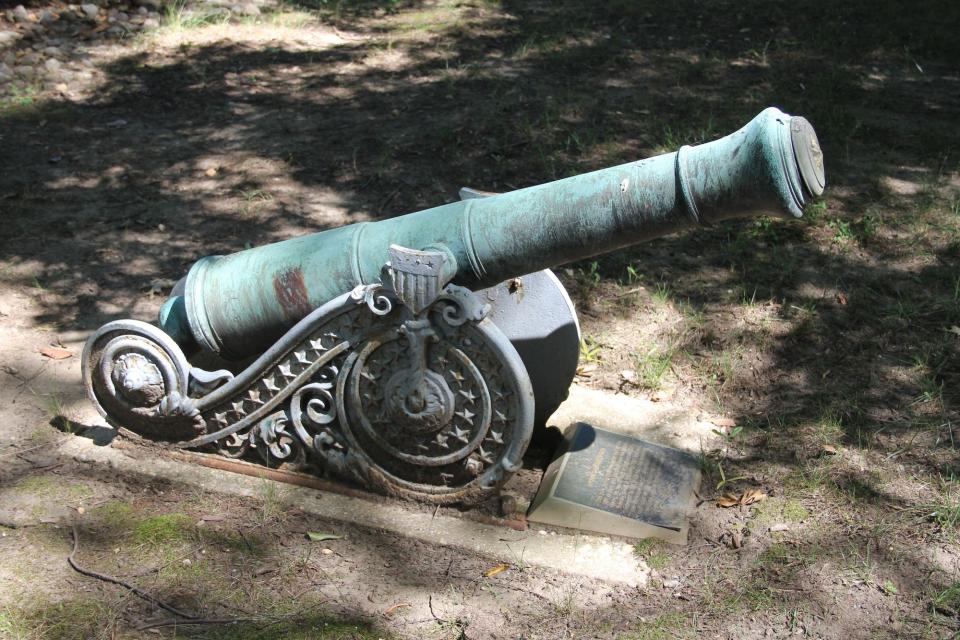
The gun, dating back to the late 18th century, was likely used by a merchantman or privateer.
An original guardhouse from the 1830s was positioned near the cannon displays.
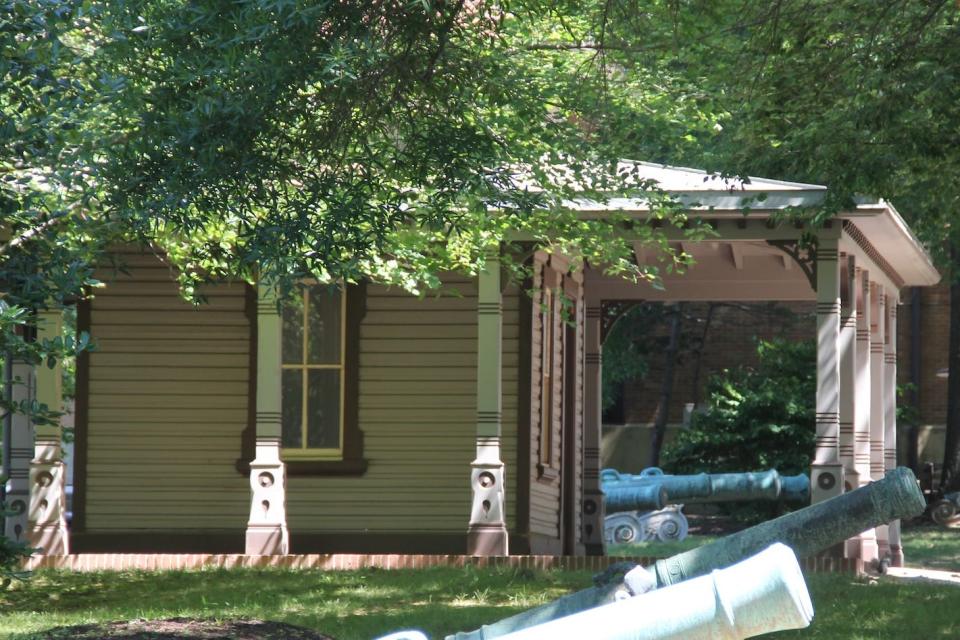
The structure was temporarily moved to a Navy facility in Indian Head, Maryland, and sat abandoned for decades until it was restored and returned to the Washington Navy Yard.
On the way to our next stop, I took in a stunning view of Latrobe Gate, which was once the main entrance to the Washington Navy Yard.
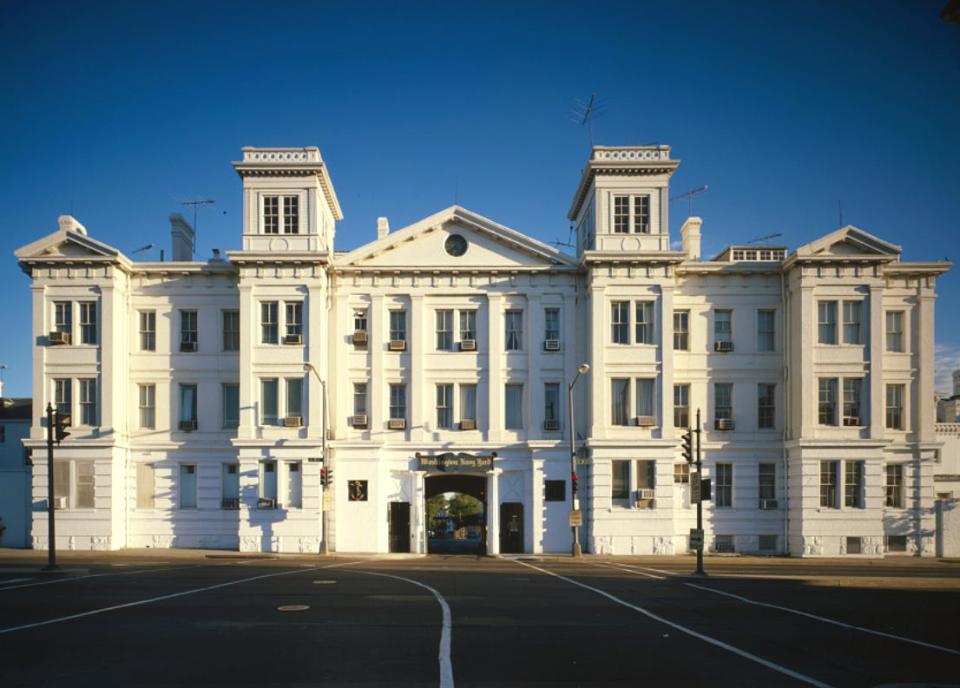
Latrobe Gate was built by architect Benjamin Henry Latrobe, who also designed the US Capitol Building. The Greek Revival structure survived the War of 1812 and remains the oldest continuously manned Marine sentry post in the US, according to Naval Support Activity Washington. Today, access to the gate is limited to the flag officers who live on base and their invited guests.
I couldn't take photos of the gate from inside the base for security reasons, so this image from the Library of Congress shows the gate as it looked in the 1980s.
Quarters B is likely the oldest building on the base, possibly dating back to the 1790s.
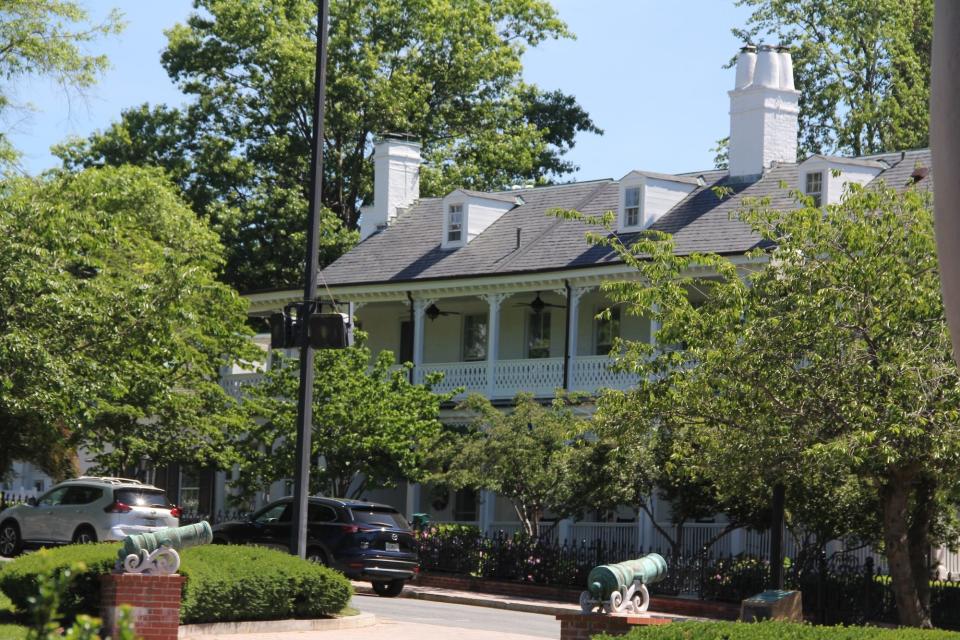
Quarters B housed the second officer of the Washington Navy Yard.
Next to Quarters B, obscured by the trees, was Tingey House, named for the first Commandant of the Washington Navy Yard, Captain Thomas Tingey. Also known as Quarters A or the Commandant's House, it is now the official residence of the Chief of Naval Operations.
Both structures, along with Latrobe Gate, survived the War of 1812, when Tingey commanded US forces to burn the Washington Navy Yard to prevent the British from capturing it.
Outside the historic homes, the anchor from the USS Enterprise was mounted on a platform.
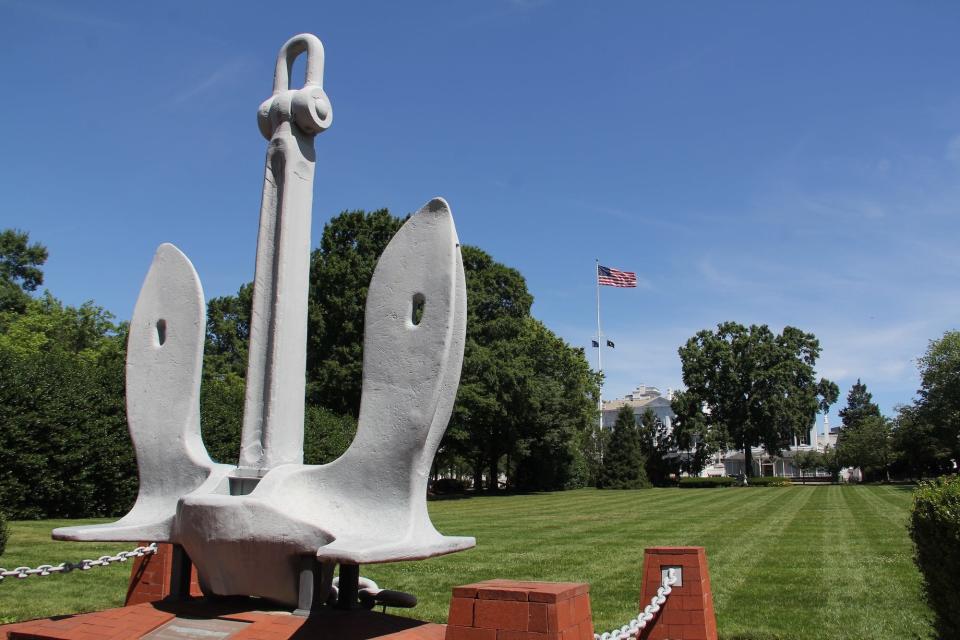
According to the museum, the USS Enterprise was the first nuclear aircraft carrier in the world and took part in numerous missions and battles from 1961 until 2012.
The Enterprise tracked the first American orbital spaceflight as part of Project Mercury in 1962, helped evacuate Saigon during Operation Frequent Wind in 1975, and struck Iraqi targets during Operation Desert Fox in 1998, among others.
This Naval History and Heritage Command headquarters is where Captain Charles McVay was court-martialed after the sinking of the USS Indianapolis.
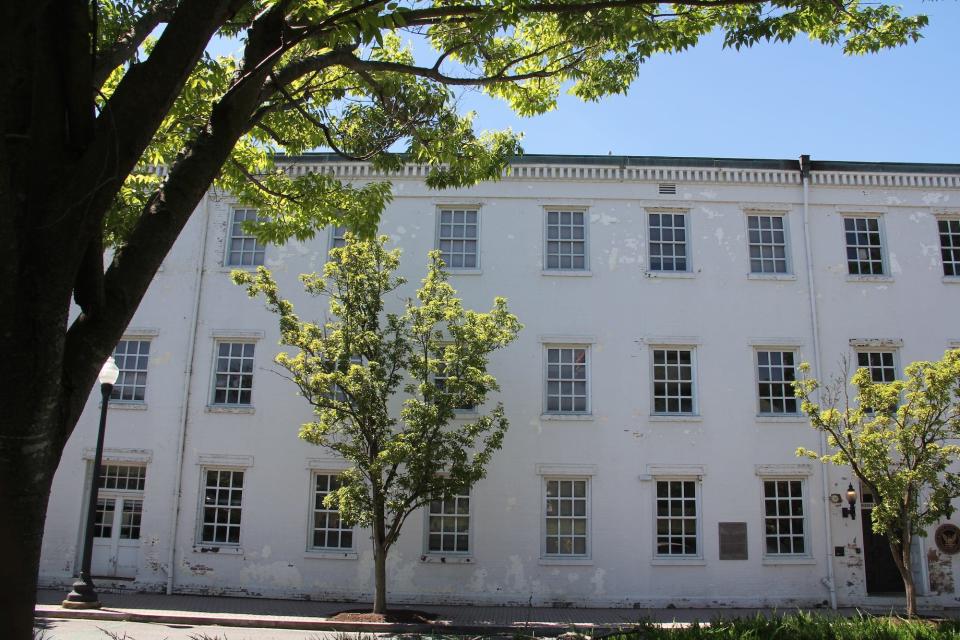
In 1945, a Japanese submarine fired torpedoes at the Indianapolis as it traveled from Guam to Leyte after delivering the atomic bomb that would later be used on Hiroshima. The ship sank 12 minutes later.
Out of 1,195 crew members, 316 survived, according to the US Naval Institute. Around 200 crew members reportedly died from shark attacks.
The ship became more well-known after its mention in the movie "Jaws," in which the character Quint recounts his experience as a survivor of the Indianapolis wreck and the gruesome shark attacks that followed.
McVay was the only Navy commander to be court-martialed for losing a ship during battle in World War II. He was widely viewed as a scapegoat, leading his conviction to be overturned by Navy Secretary James Forrestal, The New York Times reported. Still, his reputation never truly recovered. He died by suicide in 1968, and over 50 years later, Congress passed a resolution fully exonerating him.
The old Winch House, where ships were removed from the water to be repaired, has been transformed into a coffee shop.
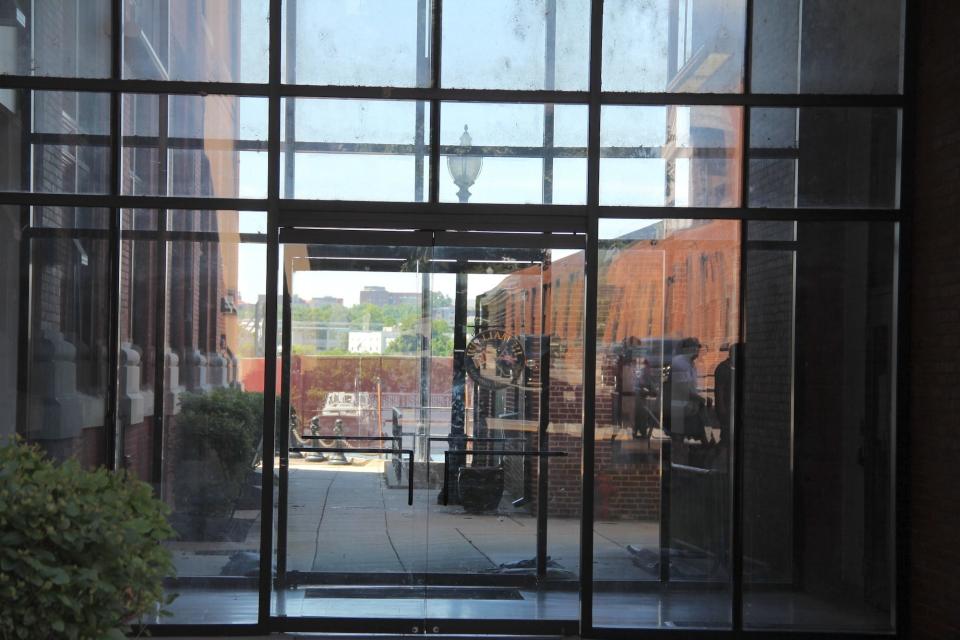
Before steam winch engines hauled ships onto land, hundreds of sailors would manually pull them in.
The Taylor Building once housed a 470-foot wave pool used to test ship hull models.
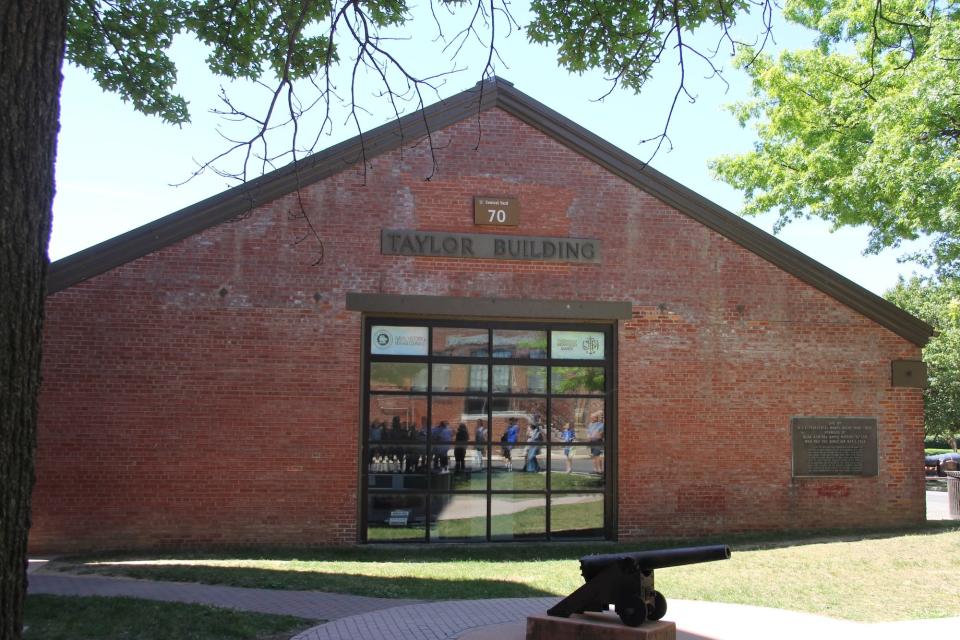
Ships and submarines are now tested in a 12 million-gallon pool at a Navy facility called Carderock in Maryland.
"The Washington Navy Yard is oftentimes an incubator to various ideas and concepts that will become standard for the US Navy as well as some industries over time," Galloway said. "But once it gets too large for what is relatively a small footprint throughout its history, that's when you start seeing it move to places that you might know today that are better for those activities."
Building 1 is the Navy's oldest active office building.
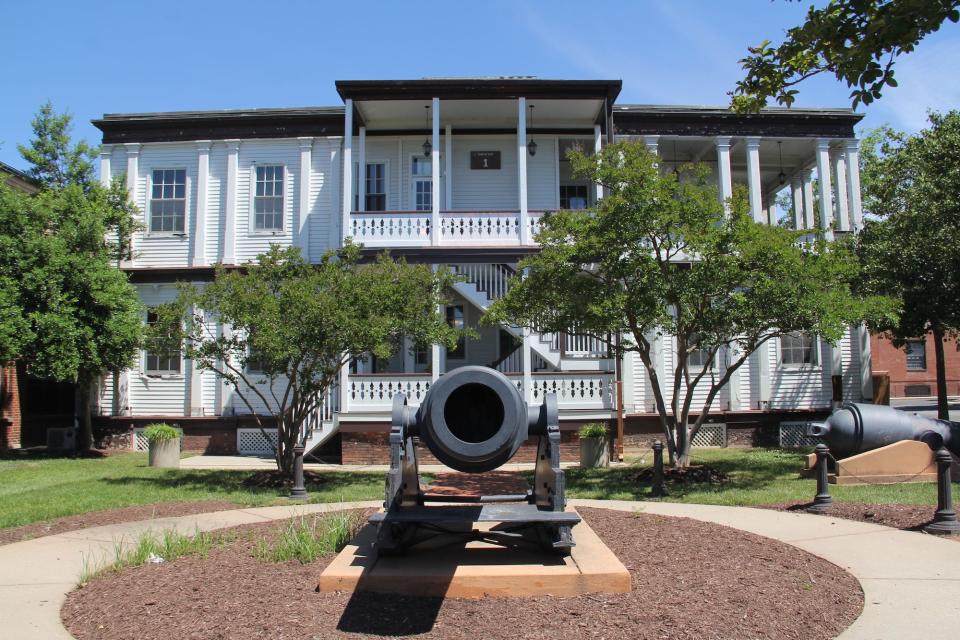
Built in 1838 and most recently remodeled in 2006, Building 1 serves as the Commandant's Office.
We then walked to Willard Park, which displayed more notable artifacts and pieces of artillery.
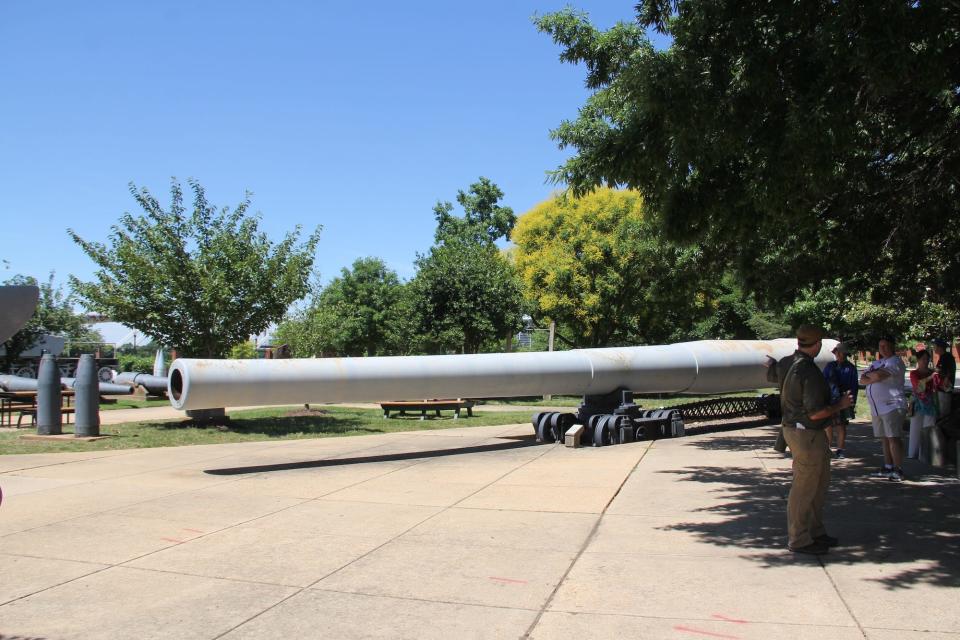
Willard Park is named for Adm. Arthur Willard, who served as commandant of the Navy Yard during World War I.
A spare propeller blade from the USS Maine, which sank in Havana Harbor in 1898, paid tribute to the lost ship.
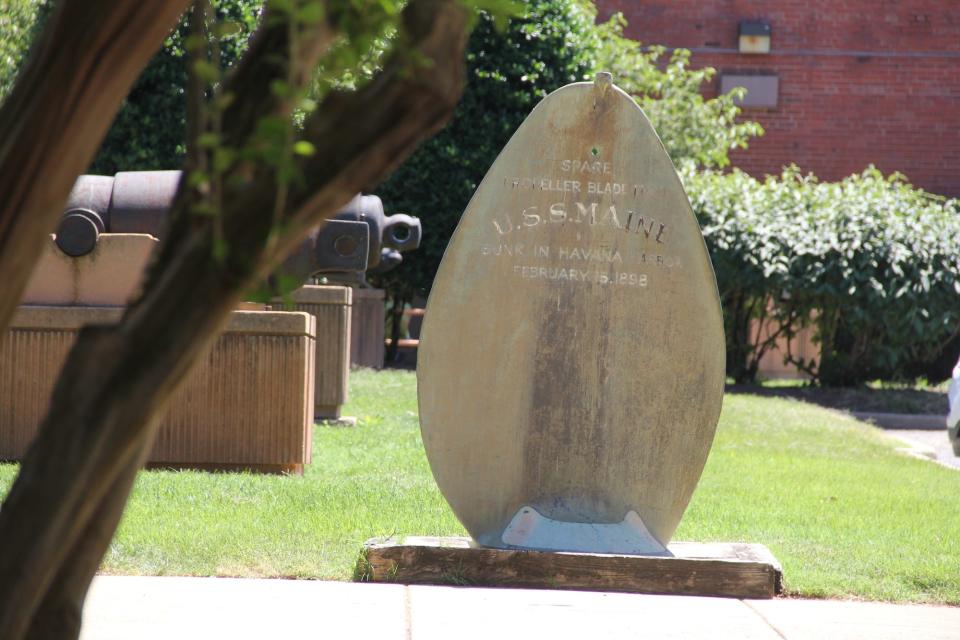
The ship's sinking was a catalyst for the Spanish-American War, during which the US obtained Guam, Puerto Rico, and the Philippines and annexed Hawaii, according to the US Office of the Historian.
One of the coolest artifacts on the tour was the pressure sphere from the Alvin, the submersible that discovered the wreck of the Titanic.
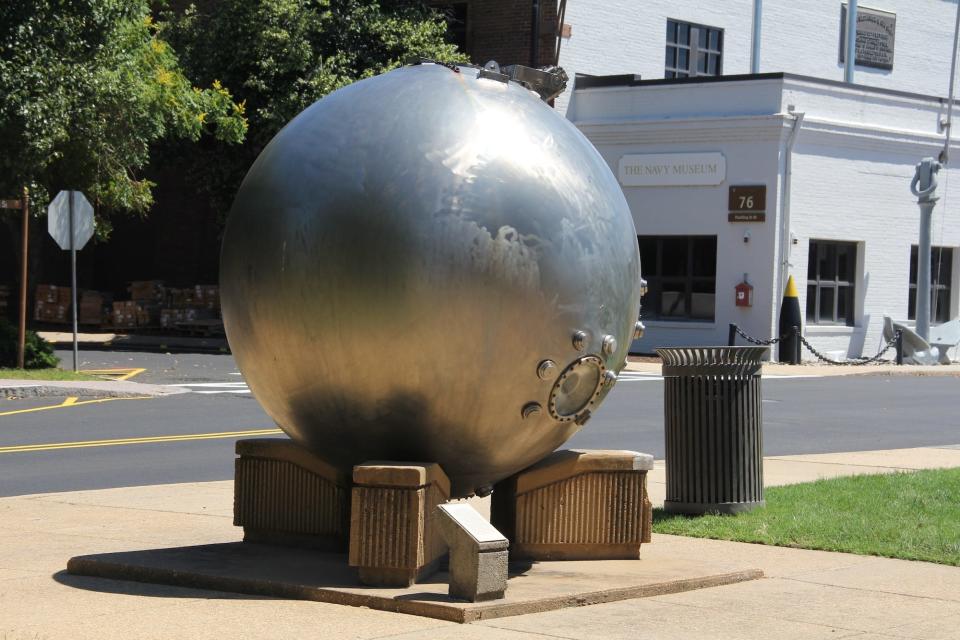
The Titanic was discovered in 1985 — more than 70 years after the sinking — during a secret Navy mission to locate the wrecks of two nuclear submarines. The true nature of the mission only became public in 2008 when oceanographer Robert Ballard published a book about his experience.
The last stop on the tour of the Washington Navy Yard was a parking garage with an unconventional macabre history, our guide explained.
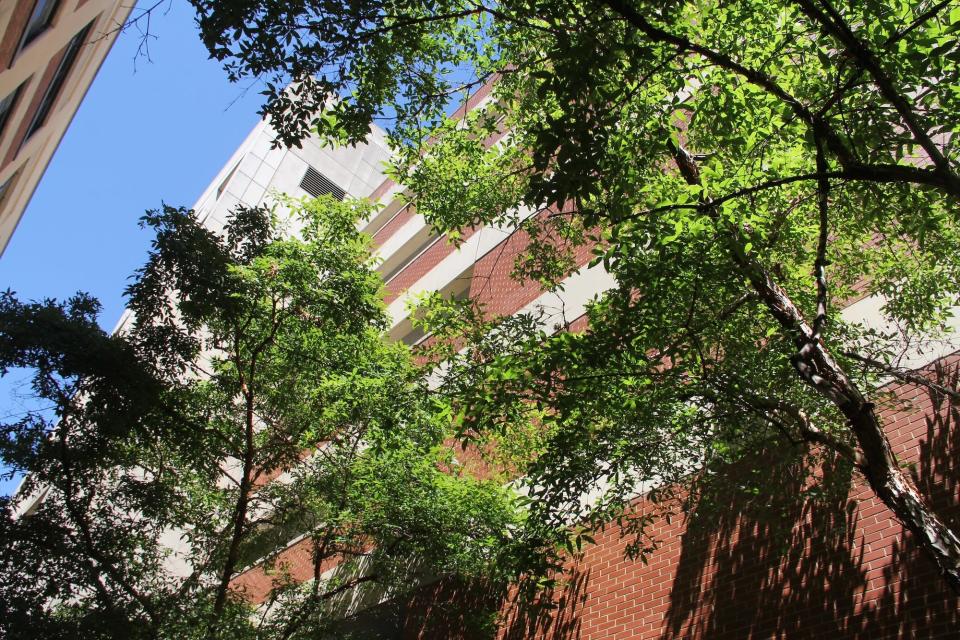
Ulric Dahlgren, a Union colonel during the Civil War and the son of Union Navy Rear Adm. John Dahlgren, was wounded in the leg during the Battle of Hagerstown following the Battle of Gettysburg in 1863.
When amputation became necessary, the leg was interred with full military honors in the cornerstone of a foundry that was under construction in the Washington Navy Yard. The foundry was torn down in 1915 and, several buildings later, a parking garage now occupies the site. Dahlgren's leg was lost somewhere along the way, but a plaque on the parking garage still marks the spot where it would have been.
The National Museum of the United States Navy is absolutely worth visiting, even in its temporary home.
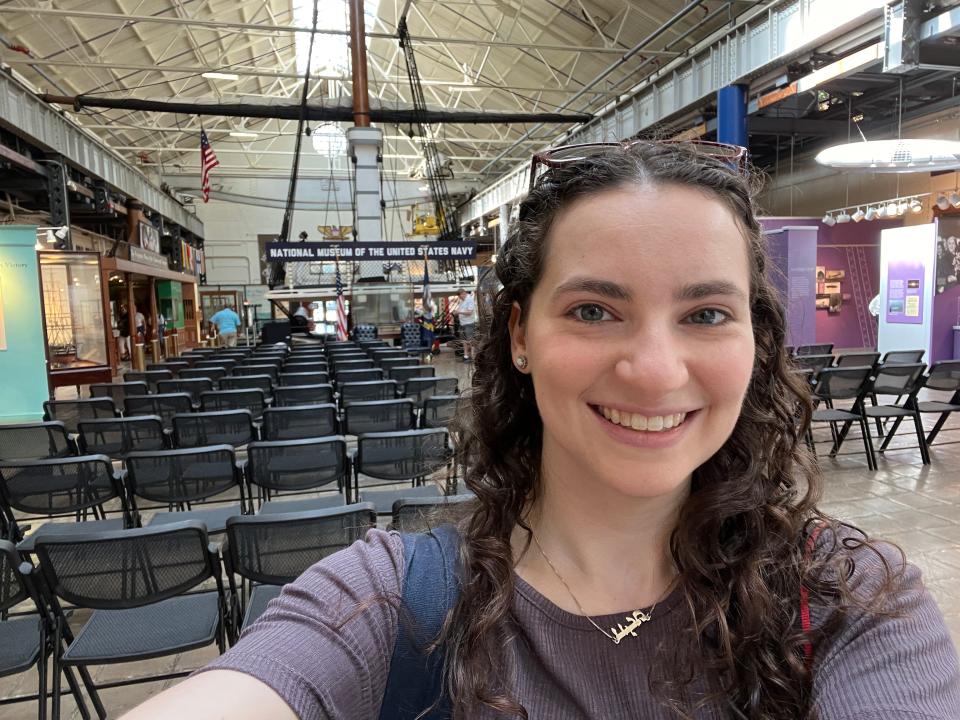
"The Washington Navy Yard still serves as a very important hub for the United States Navy to this day, we're just much smaller now," Galloway said. "And as you can see, the US Navy Museum is shrinking so that we can grow again so that we can better tell the story of the US Navy and the nation."
I'm looking forward to visiting the National Museum of the United States Navy again when its larger, permanent home is eventually established. In the meantime, it's still a fascinating site that pays tribute to the Navy's nearly 250-year history and provides a rare glimpse into the inner workings of a military command center.
Read the original article on Business Insider

